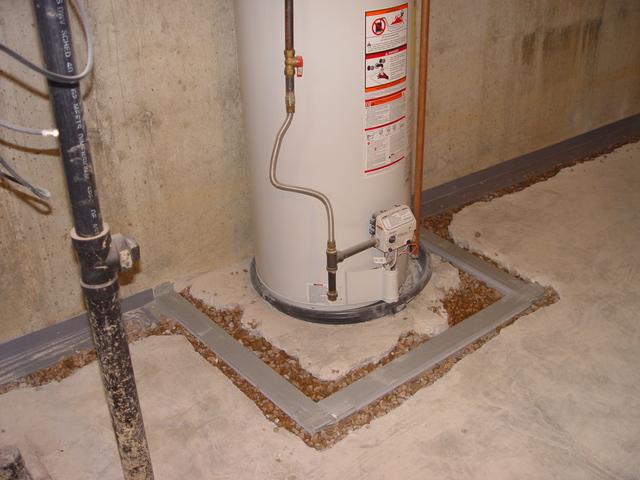A well-crafted meta description is crucial for attracting potential clients to your architecture firm’s website. This short yet powerful snippet plays a significant role in search engine optimization (SEO) and can be the deciding factor in whether a user clicks on your link or moves on to a competitor’s page. In this guide, we will explore how to create an engaging and effective meta description that enhances your firm’s online presence.
What Is a Meta Description?
A meta description is a brief summary of a webpage that appears in search engine results beneath the title tag. Although search engines like Google do not directly use meta descriptions as ranking factors, they significantly influence click-through rates (CTR). An engaging meta description should concisely communicate what your page is about while compelling users to visit your site.
Why Is a Meta Description Important for an Architecture Firm?
Architecture is a highly competitive industry where first impressions matter. Since potential clients often research online before reaching out, an effective meta description can:
- Highlight your firm’s expertise and unique services.
- Differentiate your business from competitors.
- Improve your website’s visibility and CTR.
- Encourage potential clients to take action, such as scheduling a consultation.
K6 Agency specializes in crafting compelling meta descriptions that drive engagement and increase click-through rates. By leveraging SEO best practices and understanding your firm’s unique value proposition, we help architecture firms stand out in search results and attract the right clients.
Key Elements of a Compelling Meta Description
A compelling meta description should be concise, clear, and persuasive. Here are some critical elements to consider:
1. Keep It Within the Ideal Length
Search engines typically display around 150-160 characters of a meta description. If your description is too long, it may get cut off, leaving out essential information. Aim to convey your message effectively within this character limit.
2. Use Action-Oriented Language
Encourage potential clients to take action by using verbs like “discover,” “explore,” “build,” “transform,” or “schedule.” This makes your meta description more dynamic and engaging.
Example:
“Transform your living space with award-winning designs from [Your Firm’s Name]. Schedule a consultation today!”
3. Incorporate Relevant Keywords
Including keywords that potential clients are searching for can increase the likelihood of your page appearing in relevant search results. However, avoid keyword stuffing—use keywords naturally within the description.
Example:
“Looking for a modern architectural design? Our expert team specializes in sustainable and innovative solutions for homes and businesses.”
4. Highlight Your Unique Selling Proposition (USP)
What sets your architecture firm apart from others? Whether it’s your experience, design philosophy, or specialty in a particular architectural style, make sure your USP is clear.
Example:
“Award-winning architects specializing in sustainable and contemporary designs. Let’s build your dream project together!”
5. Address Your Target Audience’s Needs
Think about what your potential clients are looking for. Are they interested in luxury homes, eco-friendly buildings, or commercial architecture? Tailor your meta description to their needs.
Example:
“Create stunning, energy-efficient homes with our expert architects. Contact us today to bring your vision to life!”
6. Maintain Brand Voice and Tone
Your meta description should reflect your firm’s brand identity. If your firm has a professional and sophisticated tone, maintain that in your descriptions. If you take a more creative and approachable stance, let that shine through.
7. End With a Call to Action (CTA)
A strong CTA encourages users to take the next step. Common CTAs include:
- “Get a free consultation today!”
- “Explore our portfolio now!”
- “Contact our team for expert advice!”

Examples of Effective Meta Descriptions for Architecture Firms
Example 1: Residential Architecture Firm
“Design your dream home with [Firm Name], experts in luxury and modern architecture. Schedule a consultation today!”
Example 2: Commercial Architecture Firm
“Innovative commercial architecture tailored to your business needs. Discover our award-winning projects at [Firm Name].”
Example 3: Sustainable Architecture Firm
“Eco-friendly architecture that blends beauty with sustainability. Let’s create a greener future together. Contact us now!”
Common Mistakes to Avoid
While crafting your meta description, avoid these common pitfalls:
- Being Too Generic – A vague description like “We offer great architectural services” does not entice users to click.
- Keyword Stuffing – Overloading your meta description with keywords makes it look spammy and unprofessional.
- Lack of a CTA – Without a clear call to action, users may not feel compelled to visit your site.
- Duplicate Descriptions – Ensure each page of your website has a unique and relevant meta description.
- Ignoring the Target Audience – If your description does not address the needs of your potential clients, they are less likely to engage with your site.
How to Implement Meta Descriptions on Your Website
Once you’ve crafted the perfect meta description, it’s time to implement it. Most content management systems (CMS) like WordPress, Wix, and Squarespace allow you to add meta descriptions easily. If you’re using SEO plugins like Yoast SEO, follow these steps:
- Navigate to the page or post you want to edit.
- Scroll down to the SEO settings section.
- Enter your meta description in the designated field.
- Preview how it appears in search results.
- Save and publish your changes.
Testing and Optimizing Your Meta Descriptions
SEO is an ongoing process, and your meta descriptions should be regularly reviewed and optimized. Here’s how:
- Monitor Performance: Use Google Search Console to track click-through rates and see which pages perform best.
- A/B Testing: Try different variations of your meta descriptions and analyze which version drives more clicks.
- Keep Content Fresh: Update your meta descriptions periodically to align with changes in your services or industry trends.
Final Thoughts
A compelling meta description is an essential element of your architecture firm’s online strategy. It not only enhances your search engine presence but also increases the likelihood of potential clients visiting your website. By keeping it concise, action-oriented, and reflective of your unique offerings, you can craft meta descriptions that drive engagement and lead to more business opportunities.
Start optimizing your meta descriptions today, and watch as your architecture firm gains more visibility and attracts the right clients!




